Wasabi, also known as Japanese horseradish, is a popular root vegetable that has become very popular among food enthusiasts worldwide. It is known for its health benefits and unique flavor profile, which combines spiciness with a subtle sweetness. Wasabi has become a staple in Japanese cuisine and is now commonly used worldwide as a hot sauce substitute. Read on to learn how hot it is, what factors contribute to its heat, tips to enjoy it without burning your nose, and more.

Jump To
What is wasabi?
Wasabi is a spicy green condiment from the plant species Wasabia japonica (also known as Eutrema japonicum or Wasabia pungens). It is a staple in Japanese cuisine and is highly regarded for its strong, spicy flavor. The plant is native to Japan and grows naturally in mountainous regions with cool, flowing water.
The part of the wasabi plant used for culinary purposes is its rhizome, a horizontal underground stem. When grated, the rhizome transforms into a green paste with a distinctive and potent flavor. This paste is commonly served with sushi, sashimi, and other traditional Japanese dishes. In addition to its culinary uses, wasabi is also prized for its potential health benefits.
It's worth noting that true wasabi is relatively rare and expensive. Many commercial "wasabi" products are made from a mixture of horseradish, mustard, and food coloring, as authentic wasabi can be difficult to cultivate and harvest. These imitation products are more readily available and less expensive but lack real wasabi's unique taste and health properties.
The spiciness of wasabi comes from a group of compounds known as isothiocyanates, which are released when the rhizome is grated or crushed. These compounds give wasabi its distinctive heat, which is different from the capsaicin-induced spiciness of chili peppers.
Wasabi and the scoville scale
To understand how hot wasabi is, it is crucial to first learn about the Scoville scale. The Scoville scale measures the heat or spiciness of chili peppers and other spicy ingredients. The scale quantifies the level/amount of capsaicin, the compound responsible for the sensation of heat in spicy foods. For instance, bell peppers have a Scoville rating of zero. On the other hand, Carolina Reaper (arguably the hottest pepper) can exceed two million Scoville units.
So, where does wasabi stand on this scale? Surprisingly, wasabi’s heat level is fairly modest compared to some fiery chili peppers. Fresh wasabi has a Scoville rating of around 30,000 to 50,000 Scoville heat units. While this is considerably milder than the hottest peppers with fiery flavors, e.g., ghost pepper, habanero peppers, etc., the distinct spiciness of this bright green paste is still enough to leave a notable impact on the taste buds.
What makes wasabi hot?
The heat in this spicy ingredient comes from a group of compounds known as isothiocyanates. When the cells of the wasabi plant are damaged, e.g., when grating fresh wasabi, these compounds are released and trigger a spicy sensation. Allyl isothiocyanate is the most prevalent isothiocyanate in wasabi. It contributes to its unique spicy flavor profile and heat.
It is important to note that wasabi is not the same in terms of heat as hot peppers. This is because both feature different chemical compounds. Capsaicin in chili peppers or jalapeno pepper targets receptors responsible for detecting heat. On the other hand, isothiocyanates in wasabi act on the pain receptors. This explains why the heat from wasabi paste is often described as an intense, sharp sensation.
Everyone’s experience is different
As with many spicy foods, the perception of how hot wasabi is can vary significantly from person to person. Some individuals may find the spiciness of wasabi to be very pleasant and enjoy the tingling sensation it provides, while others might be more sensitive to its heat and find it overwhelming. Factors such as your taste preferences, tolerance for spicy foods, and overall sensitivity to pungent flavors can influence how hot wasabi feels to you.
How to enjoy wasabi without overwhelming your taste buds
If you find wasabi too hot to handle, there are ways to enjoy it without overwhelming your taste buds. Here are some tips/recommendations:
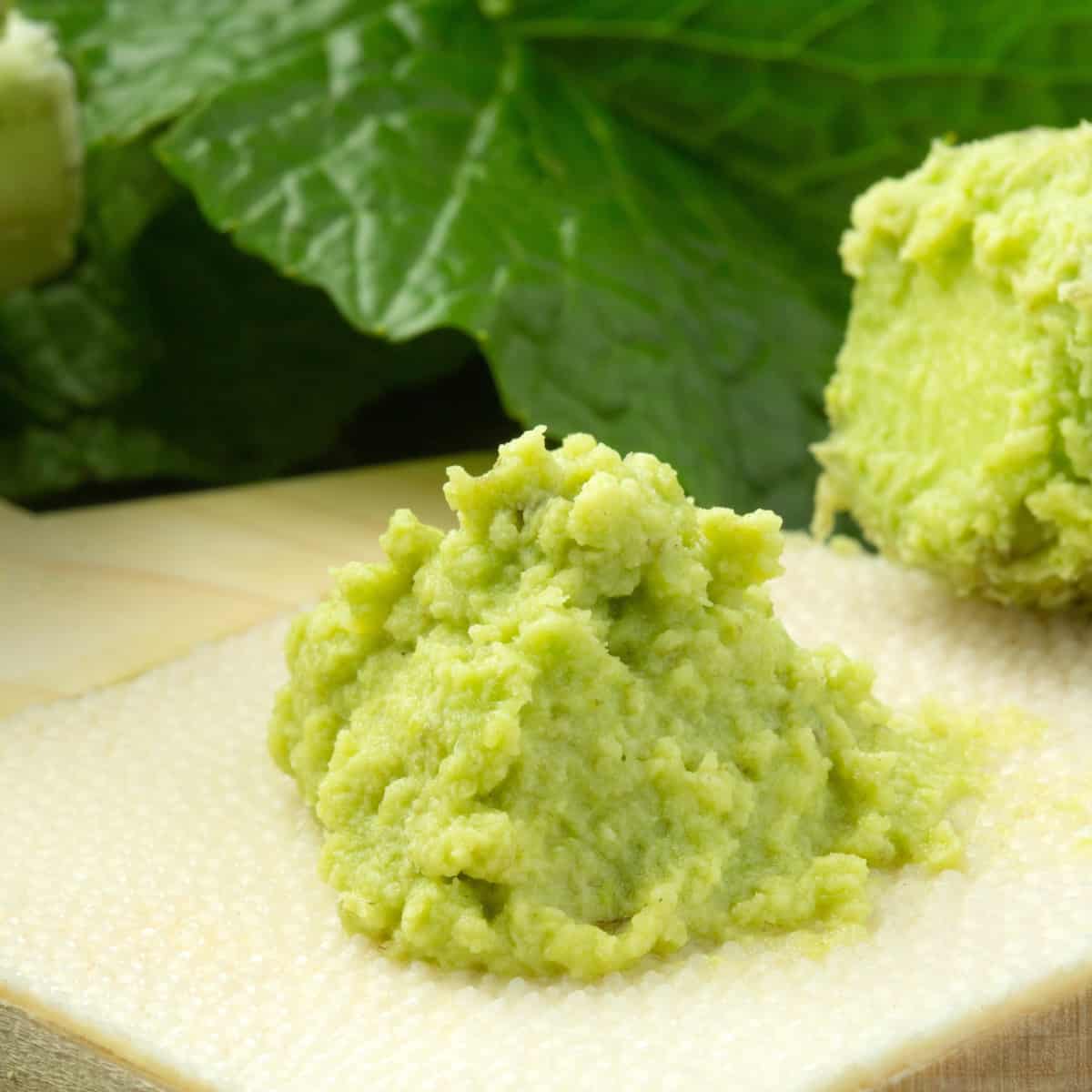
If Possible, Use Real Wasabi
Choose fresh, authentic wasabi instead of fake versions made with horseradish and mustard. Genuine wasabi tends to have a more delicate and complex flavor, and its heat is also relatively milder than imitation wasabi.
Use a Small Amount
Start with a small amount of wasabi sauce and slowly increase it according to your taste preferences. This is particularly recommended if it’s your first time eating it. Avoid adding too much wasabi powder to your food, as it will overpower your dish with heat. It’s better to add the condiment more gradually.
Mix Wasabi With Soy Sauce
Combining wasabi spice with soy sauce or a dipping sauce can help mellow its spiciness. These sauces act as a mild buffer and balance the heat of wasabi. Not to mention they also enhance the overall umami flavor.
Chew Your Food Thoroughly
Chewing your food thoroughly can help spread the wasabi’s heat sensation more evenly in your mouth and reduce the concentration of compound allyl isothiocyanate in your nose. It is also recommended because it helps you savor the taste of the food and the wasabi better.
Drink Water or Milk
If you are overwhelmed by the wasabi burn, drink water or milk to soothe the burning sensation. Isothiocyanates are not soluble in water, so drinking water won’t completely extinguish this spicy green paste's hot/burning sensation. However, it can provide some relief.
Exploring variations of wasabi
While traditional wasabi is made from the grated root of the Wasabia japonica plant, which can be quite expensive and hard to find, there are many variations of wasabi in the market that exist to provide similar flavors. Here are some variations of wasabi you might come across:
- Real wasabi (Wasabia japonica): This is the authentic and traditional form. The root of the Wasabia japonica plant is finely grated into a paste, which is then used as a condiment. True wasabi has a smoother, more nuanced flavor compared to other variations.
- Horseradish-based wasabi: Since true wasabi can be quite costly, many commercially available wasabi products use a blend of horseradish, mustard, and green food coloring as a substitute. This version can be quite spicy and closely resembles the pungency of real wasabi.
- Wasabi powder: Wasabi powder is made from dehydrated and ground horseradish, mustard, and sometimes other ingredients. It is reconstituted with water to form a paste similar to the traditional version. Wasabi powder is more accessible and affordable than real wasabi.
- Wasabi peas: Wasabi peas are a popular snack in which green peas are coated with a wasabi-flavored glaze. The result is a crunchy, spicy, and savory treat that is widely enjoyed.
- Wasabi mayonnaise: This fusion variation mixes wasabi paste or powder with mayonnaise. The combination provides a creamy and spicy dressing, often used in sushi rolls or as a dip.
- Wasabi soy sauce: A simple variation that involves adding wasabi paste or powder to soy sauce. It adds a spicy kick to the traditional dipping sauce used with sushi and sashimi.
These are just a few examples of the variations of wasabi. As you explore these variations, remember that the intensity of the wasabi flavor can vary, so adjust the amounts to suit your preference.
How to pair wasabi with different foods
Pairing wasabi with different foods can enhance the dining experience by adding a spicy and flavorful element. Here are some tips on how to pair wasabi with different foods:
- Sushi and sashimi: This is one of the most classic pairings. Use a small amount of wasabi with your sushi and sashimi to add heat and depth of flavor. You can either mix a little wasabi into your soy sauce or apply it directly to the fish.
- Tempura: Dip your tempura, such as shrimp or vegetables, in a mixture of soy sauce and a touch of wasabi for a delightful spicy kick.
- Rice dishes: Mix wasabi into rice dishes like sushi rice, poke bowls, or fried rice to add a zesty twist to your meal.
- Noodles: Add wasabi into noodle dishes, such as udon or soba, for an extra layer of flavor. You can stir it directly into the broth or use it as a dipping sauce for the noodles.
- Meat dishes: While wasabi is traditionally associated with seafood, it can also work with certain meat dishes.
- Cheese and crackers: Surprisingly, wasabi pairs well with certain types of cheese. Serve it with soft cheeses like Brie or cream cheese on crackers for a spicy twist.
Remember that it's a potent flavor when pairing wasabi with different foods, so use it sparingly, mainly if you are not used to its spiciness. Also, consider the intensity of other dishes' flavors to strike the right balance and create a harmonious combination.
Health benefits of wasabi
While commonly known for wasabi's unique spiciness, wasabi also boasts several potential health benefits when consumed in moderation:
- Wasabi contains a group of bioactive compounds called isothiocyanates, which exhibit powerful antioxidant and anti-inflammatory properties. These compounds help neutralize harmful free radicals in the body, reducing oxidative stress and inflammation linked to various chronic diseases.
- The pungent flavor of wasabi can stimulate salivary and gastric secretions, aiding food digestion.
- Research indicates that isothiocyanates may have anti-cancer effects.
- The isothiocyanates in wasabi have been associated with promoting heart health. They may help reduce blood pressure, improve blood flow, and lower the risk of cardiovascular diseases.
- The antioxidants in wasabi can bolster the immune system by protecting the body against infections.
- Wasabi's pungent compounds can have a decongestant effect, which may help alleviate nasal congestion and respiratory issues. It is commonly believed that the spiciness of wasabi can clear the sinuses and promote easier breathing.
Long to short, moderation is key, as always. Wasabi can provide a delightful culinary experience and potential health advantages when consumed responsibly.
Conclusion
Wasabi is undoubtedly a spicy condiment, but its unique flavor and heat level makes it a great addition to various foods. Don’t let its hotness scare you away. Keep in mind that everyone’s tolerance for spiciness or heat is different. So, whether you enjoy its heat or need to moderate it, wasabi is a delicious ingredient that adds a delightful extra kick to your culinary experience.:)




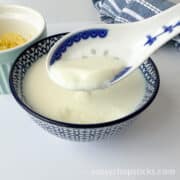

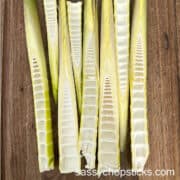




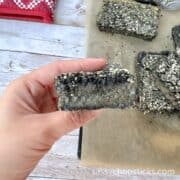




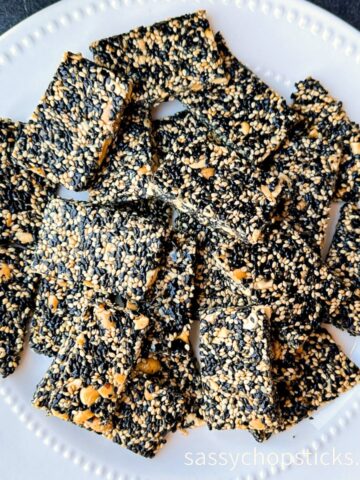
Leave a Reply